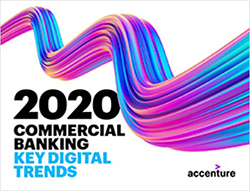Today’s incumbent commercial banks are facing new, hyper-agile competitors powered by next-generation infrastructures. To respond effectively, they need to attain a similar degree of agility throughout their onboarding and customer lifecycle management (CLM) processes—enabling them to protect their revenue base, bring innovative products to market faster and deliver market-leading customer experiences.
Achieving this means overcoming several barriers
- High operational costs driven by the involvement of multiple parties in the onboarding process—compliance, credit analysis, tax and more—each with its own processes and systems.
- A diverse client base, with businesses ranging from sole traders to multinational corporates, means that a “one-size-fits-all” model is insufficient. Typically, incumbent banks also have a high number of dormant, low-profit and/or high-risk client relationships, which are costly to maintain.
- The need to meet evolving regulation, which requires banks to constantly assess the balance between control requirements and the client experience. Global banks often find they have to revisit their existing operations/processes and technologies based on country-level regulations and cross-border data-sharing rules.
- Another challenge is long onboarding cycle times and unsatisfactory user/customer experiences due to high levels of manual intervention. A lack of integration and the need to check and validate information lead to clients having to provide the same documents at multiple points. Many choose a “mobile-first” approach, but clients’ experience when switching channels is rarely seamless, which exacerbates inconsistent omnichannel experiences.
- Finally, siloed product teams can limit a relationship manager’s ability to reuse KYC/CDD data captured during initial onboarding. Product setup often requires further onboarding effort for existing clients.
Commercial banks have the opportunity to compete more effectively with the digitally enabled entrants by transforming their onboarding experience to be more efficient and more relevant to their customers than ever before.
There are, however, solutions to these challenges
- Artificial intelligence (AI) and automation can enable continuous monitoring through the use of powerful entity-resolution tools like Quantexa. Collating internal and external data helps to provide a holistic view of the customer and their networks, enabling a richer risk-profiling process. This can be used to move towards a more dynamic, continuous review system, eliminating the need for static periodic KYC reviews, driving better risk outcomes and increasing efficiency and cost savings.
- Digital identities can also be harnessed to automate ID checks by screening a customer’s personal details against third-party sources to establish the customer’s electronic footprint. Real-time ID document validation and authentication can also reduce the dependency on RMs to verify customers’ identities.
- Other automation tools, including biometrics, can be used to reduce fraud risk by authenticating the ID holder. There are tools that include facial-recognition algorithms, enabling customers to take selfies that are then matched to their IDs. Meanwhile, the use of e-signature tools such as Adobe LiveSign or DocuSign increases the level of straight-through processing and eliminates the need for “wet” signatures.
- Technology and infrastructure must be optimised by adopting “cloud-first” strategies. Banks moving to cloud-based platforms benefit from scalable, on-demand infrastructure with faster speed-to-market and a lower cost of onboarding operations. The benefits can be increased still further by combining this strategy with platforms and APIs to automate end-to-end workflow, with solutions such as Fenergo, nCino, Appian and Pega supporting parallel processing, document management/storage and cloud services. API integration with external data providers can automate and strengthen customer due diligence.
- Process and product optimisation can be achieved by collecting all required information from customers as part of the initial onboarding process. For key products such as credit, liquidity and cash management, this removes the need for customers to go through a lengthy KYC process multiple times and enhances the customer experience and time to trade. Meanwhile, customer self-serve activities enable banks to remove low-value-add administrative CLM activities by automating and streamlining processes and reducing manual effort. This frees up RMs to focus on drawing insights from data to maximise client and bank value.
Time to act
The message is clear. Commercial banks have the opportunity to compete more effectively with the digitally enabled entrants by transforming their onboarding experience to be more efficient and more relevant to their customers than ever before. They can achieve this by enhancing the process, embedding new solutions and empowering customers, colleagues and operating models with AI and automation. The time to act is now.
For more information on the key trends we see emerging in 2020 for commercial banking, read our report.
This makes descriptive reference to trademarks that may be owned by others. The use of such trademarks herein is not an assertion of ownership of such trademarks by Accenture and is not intended to represent or imply the existence of an association between Accenture and the lawful owners of such trademarks.












